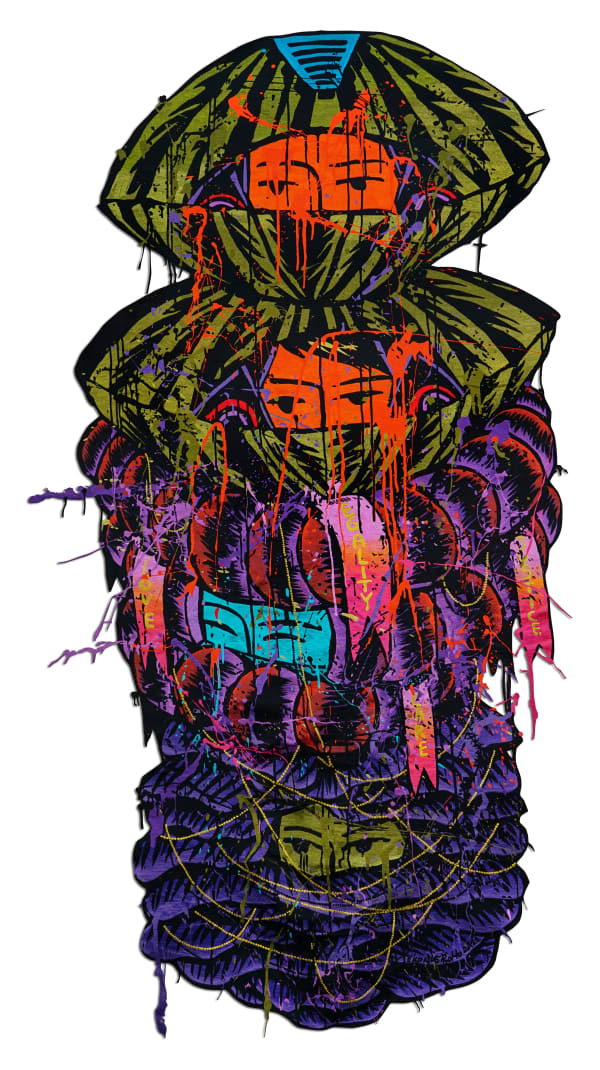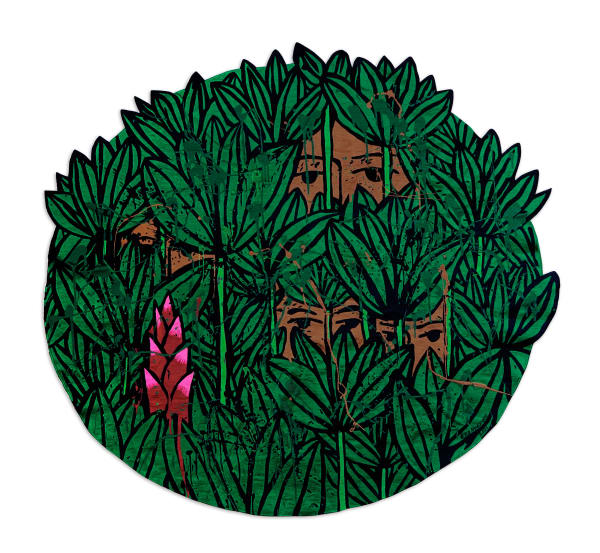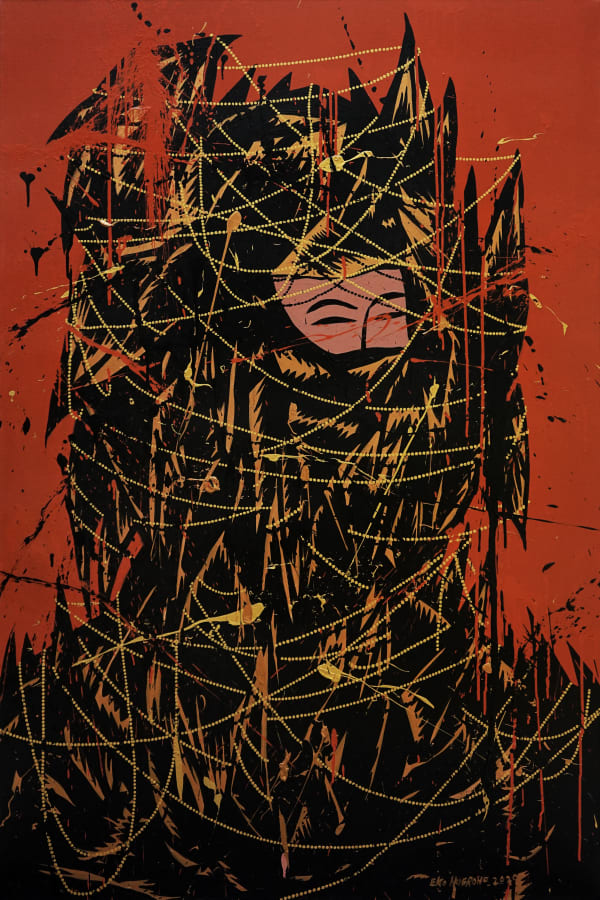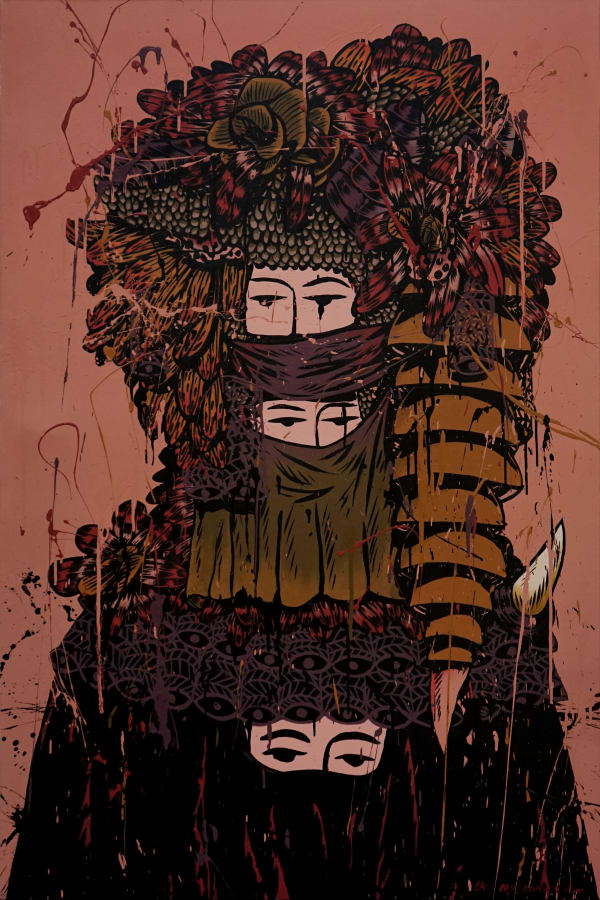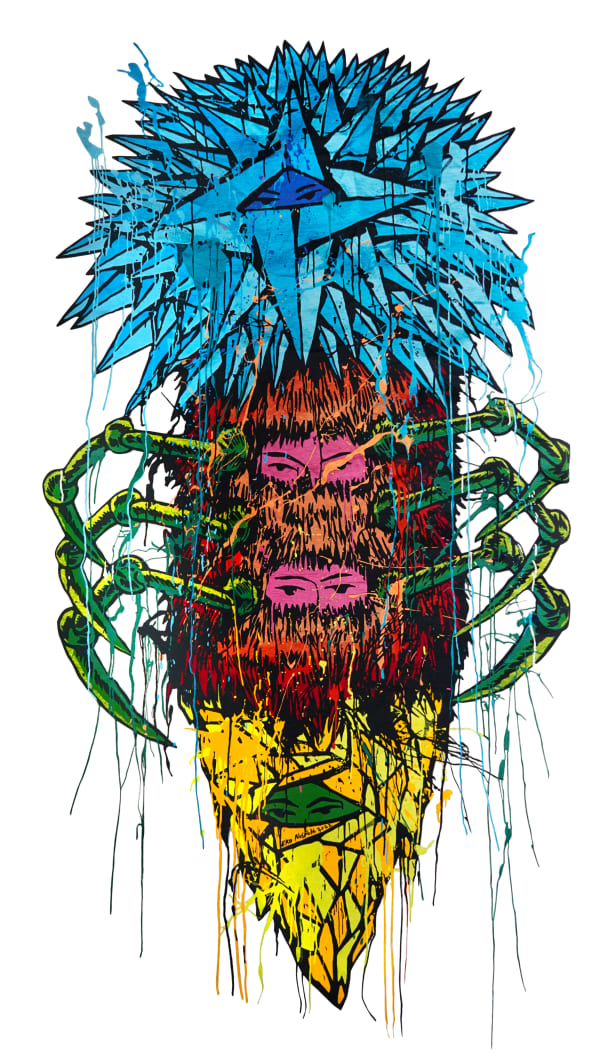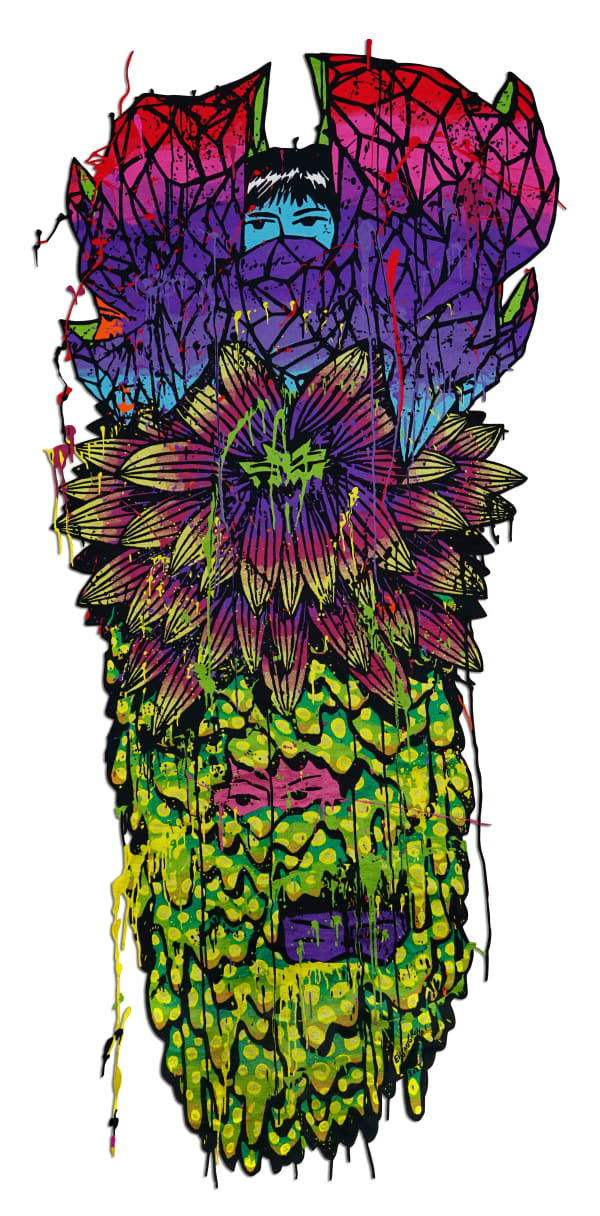-
Danysz Paris - Marais is pleased to present Eko Nugroho's solo exhibition: "Heads Full of Empty Views" from October 15 to November 26, 2022. The internationally renowned contemporary Indonesian artist who invested the spaces of the Museum of Modern Art in Paris in 2012, is finally back in France and invites us to discover all the richness and extent of his art through this major solo show, that dives us into a surrealist universe, resolutely graphic and penetrating, with its bright and vivid works that convey an optimistic energy without limit.
"I create characters who only observe with their eyes, but not with their ears or their voice.
This represents the generation that doesn't want to talk and doesn't want to listen.
There is no communication. The eyes are witnesses for me."
– Eko Nugroho -
"Heads Full of Empty Views" is a project that speaks about people, particularly the modern people in today’s society.
People that are around us, including myself and yourself. Us and our heads. Us and what exists in our minds."
- Eko Nugroho -
"It was in July 2010 that I met Eko Nugroho for the first time at Yogya. I was struck by his enthusiasm. He is an artist who gives himself no limits in creation and acts like a conductor. He takes possession of all the space that is offered to him. The visitor is truly overwhelmed by his works. Eko is the artist of all identities. His repetitive mural patterns curiously recall those of Sonia Delaunay. He is both modernist and futurist. He has managed to perpetuate in an original way the batik technique, formerly used for the clothes of the royal family. Eko shows us a hybrid work, generous and resolutely universal."
- Hervé Mikaeloff, independent curator and art advisor for Louis-Vuitton and the LVMH Group.
-
-
 Eko Nugroho, Knowing but Hard to Understand, 2022 - Embroidered painting - 268 x 145 cm
Eko Nugroho, Knowing but Hard to Understand, 2022 - Embroidered painting - 268 x 145 cm -
-
 Eko Nugroho, While You As Me And Me As You #3, 2020 - Acrylic on Canvas - 150 x 100 cm
Eko Nugroho, While You As Me And Me As You #3, 2020 - Acrylic on Canvas - 150 x 100 cm -
 Eko Nugroho, The Family, 2021 - Embroidered painting - 161 x 146 cm
Eko Nugroho, The Family, 2021 - Embroidered painting - 161 x 146 cm -
 Eko Nugroho, We Always Just Try to be Blind, 2018 - Manual embroidery - 646 x 244 cm
Eko Nugroho, We Always Just Try to be Blind, 2018 - Manual embroidery - 646 x 244 cm -
 Eko Nugroho's studio, Yogyakarta, Indonesia
Eko Nugroho's studio, Yogyakarta, Indonesia -
 Eko Nugroho, Denied of Promised land, 2021 - Embroidered painting - 163 x 165 cm
Eko Nugroho, Denied of Promised land, 2021 - Embroidered painting - 163 x 165 cm -
-
 Eko Nugroho working in his Yogyakarta Studio - Indonesia, 2021
Eko Nugroho working in his Yogyakarta Studio - Indonesia, 2021 -
-
"The different figures represent characters, it's my world of creatures, in a way. Some represent greed, others evoke our resemblance to machines... The same character can be placed in different situations. We hide behind a mask in the different areas of life: when we fall in love, when we make peace, declare war, etc."
-Eko Nugroho
-
 Eko Nugroho, Promises, 2022 - Acrylic on Canvas - 150 x 100 cm
Eko Nugroho, Promises, 2022 - Acrylic on Canvas - 150 x 100 cm -

Eko Nugroho graduated from the Indonesian Art Institute in Yogyakarta in 2006 and exhibited at the National Museum of Singapore in 2008. His work has been shown internationally in group and solo exhibitions: Contemporary Arts Centre in New Orleans (2008), Lyon Biennale (2009), MOCA Shanghai (2010), ZKM Karlsruhe (2011), National Gallery of Victoria in Melbourne (2011), Musée d'art moderne in Paris (2012), Venice Biennale (2013), Kunstverein in Frankfurt (2015) and M+ in Hong Kong (2018). His works are present in numerous public and private collections in Asia, Europe, America and Oceania. He lives and works in Yogyakarta.
-
Stay tuned for more:
If you wish to be informed privately of Eko Nugroho's new projects and art in advance, please email us
Heads Full of Empty Views,
Welcome to our new website
We are glad to present you with our new website. Designed as a tool for more dialogue and discoveries around the artists we love, represent and support. We would be glad to hear from you about the parts you prefer and the ones you’d wish us to add. Certain time call for action, and we believe these will also call for more sharing and things done together. Do not hesitate to contact us so we can keep on growing… together.
* denotes required fields
We will process the personal data you have supplied in accordance with our privacy policy (available on request). You can unsubscribe or change your preferences at any time by clicking the link in our emails.


